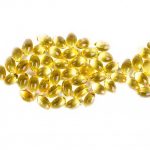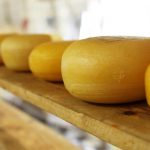Fish oil is a valuable dietary supplement known for its rich omega-3 fatty acids, which are essential for human health. The manufacturing process of food-grade fish oil involves several intricate steps to ensure the final product meets strict quality standards and regulatory requirements. This article explores the comprehensive manufacturing process of food-grade fish oil, encompassing sourcing raw materials, extraction methods, purification techniques, quality control measures, and environmental considerations.
- Introduction
Fish oil has gained significant attention in recent years due to its numerous health benefits, particularly its high content of omega-3 fatty acids. These fatty acids, such as eicosapentaenoic acid (EPA) and docosahexaenoic acid (DHA), play a crucial role in maintaining cardiovascular health, reducing inflammation, and supporting brain function. To harness these benefits, it is essential to understand the intricate manufacturing process that transforms raw fish into high-quality food-grade fish oil.
- Sourcing Raw Materials
The first step in the production of food-grade fish oil involves the careful selection of raw materials. The choice of fish species is crucial, with oily fish like anchovies, mackerel, sardines, and herring being popular choices. These fish are selected for their high omega-3 fatty acid content and relatively low levels of contaminants like mercury. Sustainable fishing practices are emphasized to maintain the ecological balance of marine ecosystems.
- Preprocessing and Preparation
Once the raw fish are harvested, they undergo preprocessing and preparation steps to remove impurities and ensure the quality of the final product. This includes gutting, washing, and sorting the fish. The use of fresh, high-quality raw material is essential to prevent the development of off-flavors and odors in the fish oil.
- Fish Oil Extraction:
The extraction of fish oil is a critical step in the manufacturing process. There are various methods employed, with two primary techniques being mechanical pressing and solvent extraction.
a. Mechanical Pressing:
Mechanical pressing involves applying pressure to the fish tissues to release the oil. This method is commonly used for smaller fish like anchovies and sardines. The fish are first heated to facilitate the extraction process. The resulting oil and liquid mixture are then separated, and the oil undergoes further refining processes to remove impurities.
b. Solvent Extraction:
Solvent extraction, typically using hexane, is another method employed for larger fish species. This process involves using a solvent to dissolve the oil from the fish tissues. The solvent is then removed through evaporation, leaving behind the concentrated fish oil. While solvent extraction can yield higher oil quantities, the process requires careful monitoring to ensure that residual solvents are effectively removed to meet food-grade standards.
- Purification and Refining:
After extraction, the crude fish oil contains impurities such as heavy metals, environmental pollutants, and oxidation byproducts. Purification and refining processes are employed to enhance the quality and safety of the fish oil.
a. Filtration:
Filtration is the initial step in purification, where the crude oil is passed through filters to remove larger impurities, including fish protein residues and solids. This step is crucial for preventing the formation of undesirable flavors and odors in the final product.
b. Molecular Distillation:
Molecular distillation is a sophisticated technique used to remove contaminants like heavy metals and environmental pollutants. In this process, the crude fish oil is subjected to high vacuum conditions, causing it to evaporate at lower temperatures than the contaminants. The evaporated, purified oil is then condensed back into liquid form. This method is effective in producing high-quality fish oil with reduced levels of impurities.
c. Winterization:
Winterization is a process that involves cooling the fish oil to low temperatures to remove waxes that may solidify at room temperature. This step ensures the oil remains clear and liquid, even under colder storage conditions.
d. Deodorization:
Deodorization is a critical step to eliminate any remaining odors or flavors in the fish oil. This process typically involves steam distillation under vacuum conditions, removing volatile compounds responsible for off-flavors. Deodorization enhances the palatability of the fish oil, making it suitable for use in various food products and dietary supplements.
- Quality Control Measures:
Quality control is integral throughout the entire manufacturing process to ensure the fish oil meets food-grade standards and regulatory requirements. Rigorous testing is conducted at various stages, including raw material selection, extraction, purification, and final product formulation.
a. Testing for Purity:
Analytical techniques such as gas chromatography and mass spectrometry are employed to test for the presence of contaminants such as heavy metals, PCBs, and dioxins. These tests ensure that the fish oil meets international regulatory standards for food safety.
b. Oxidation Testing
Fish oil is susceptible to oxidation, which can lead to the development of rancid flavors and a decrease in nutritional quality. Tests measuring peroxide and anisidine values are conducted to assess the extent of oxidation in the oil. Antioxidants, such as tocopherols, may be added to the fish oil to prevent oxidation during storage.
c. Fatty Acid Profiling:
The fatty acid composition of the fish oil, particularly the levels of EPA and DHA, is carefully analyzed. This ensures that the final product meets the specified nutritional requirements and label claims.
d. Sensory Evaluation:
Sensory evaluation is performed to assess the organoleptic qualities of the fish oil, including color, odor, and taste. Trained sensory panels evaluate the oil to ensure it meets consumer expectations for a high-quality product.
e. Microbiological Testing:
Microbiological testing is conducted to detect the presence of harmful bacteria, molds, and yeasts. Strict microbial control is essential to ensure the safety of the fish oil for human consumption.
- Environmental Considerations:
The production of food-grade fish oil also raises environmental considerations, given the impact of overfishing and the potential depletion of marine resources. Sustainable sourcing practices, adherence to international fishing quotas, and certification by organizations such as the Marine Stewardship Council (MSC) play a vital role in minimizing the environmental impact of fish oil production.
a. Sustainable Sourcing:
Sustainable fishing practices are crucial to maintaining healthy fish populations and preserving marine ecosystems. Fish oil manufacturers often collaborate with fisheries that adhere to sustainable harvesting practices, ensuring that the extraction of fish oil does not contribute to overfishing or environmental degradation.
b. Certification and Traceability:
Certification programs, such as MSC certification, provide consumers with assurance that the fish oil comes from sustainable and responsibly managed fisheries. Traceability systems are implemented to track the journey of raw materials from the fishing vessel to the final product, allowing for transparency in the supply chain.
c. Waste Management:
Efficient waste management is essential to minimize the environmental footprint of fish oil production. By-products generated during the manufacturing process, such as fish meal and fish protein concentrate, can be utilized in various applications, reducing waste and promoting a circular economy.
The manufacturing process of food-grade fish oil is a complex and highly regulated endeavor that involves careful consideration of raw material selection, extraction methods, purification techniques, quality control measures, and environmental sustainability. From the sourcing of high-quality raw materials to the stringent testing and purification processes, each step contributes to producing a final product that meets the nutritional needs of consumers while adhering to the highest standards of quality and safety. As the demand for omega-3 fatty acids continues to grow, the fish oil industry must remain committed to sustainable practices and continuous improvement in manufacturing processes to ensure a positive impact on both human health and the environment.
The Costs Associated with the Manufacture of Fish Oil
The manufacture of food-grade fish oil involves various costs associated with different stages of the production process. These costs encompass raw material acquisition, processing, quality control, compliance with regulations, and environmental considerations. Understanding these costs is crucial for manufacturers to maintain profitability while ensuring the production of high-quality fish oil. Here, we will explore the key cost factors associated with the manufacture of food-grade fish oil:
- Raw Material Costs:
a. Fish Procurement:
- The cost of acquiring raw fish is a significant factor. It includes expenses related to fishing operations, whether through direct harvesting or purchasing from fisheries.
- Sustainable fishing practices, certifications, and adherence to regulations may contribute to higher costs but are essential for ethical and environmental considerations.
b. Transportation:
- Transportation costs are associated with bringing the raw fish from the harvesting location to the processing facility.
- Depending on the location of the fishery and the processing plant, transportation costs may vary.
- Processing Costs:
a. Extraction Methods:
- The choice of extraction method, whether mechanical pressing or solvent extraction, affects costs. Solvent extraction may involve additional expenses related to solvent handling and disposal.
- Energy costs associated with heating during the extraction process contribute to overall processing expenses.
b. Purification and Refining:
- Purification processes, such as filtration, molecular distillation, winterization, and deodorization, involve equipment, energy, and labor costs.
- The use of advanced technologies for molecular distillation and filtration may increase initial capital investment but can contribute to higher-quality products.
c. Quality Control:
- Costs associated with testing for purity, oxidation levels, fatty acid profiling, sensory evaluation, and microbiological safety are essential for maintaining product quality.
- Employing skilled personnel and investing in advanced laboratory equipment contribute to quality control costs.
- Regulatory Compliance Costs
a. Certifications:
- Obtaining certifications, such as those from regulatory bodies and sustainability organizations like the Marine Stewardship Council (MSC), incurs costs.
- Compliance with international standards ensures that the fish oil meets safety and quality requirements, but certification processes can be resource-intensive.
b. Documentation and Reporting:
- Meeting regulatory requirements involves maintaining detailed records, conducting audits, and submitting reports. The administrative workload can contribute to compliance costs.
c. Quality Assurance:
- Implementing quality management systems and ensuring compliance with Good Manufacturing Practices (GMP) may require investments in training, documentation, and process improvements.
- Environmental Considerations:
a. Sustainable Practices:
- Adhering to sustainable fishing practices and obtaining certifications may involve additional costs, such as supporting responsible fisheries and implementing traceability systems.
- Environmental impact assessments and monitoring programs contribute to the overall cost of sustainable practices.
b. Waste Management:
- Efficient waste management to minimize the environmental impact may require investments in technologies for by-product utilization or recycling.
- Meeting environmental regulations and standards for waste disposal may add to operational costs.
- Labor Costs:
- Skilled labor is essential for various stages of the manufacturing process, including fish processing, quality control, and administration.
- Training programs to ensure staff competency in handling specialized equipment and maintaining quality standards contribute to labor costs.
- Technology and Equipment:
- Investing in advanced technology and equipment for extraction, purification, and quality control processes incurs capital expenses.
- Regular maintenance and upgrades to ensure efficiency and compliance with evolving industry standards contribute to ongoing costs.
- Market Conditions:
- Fluctuations in the market, including the supply and demand for fish oil and changes in raw material prices, can impact manufacturing costs.
- Competing with other producers in the market may necessitate adjustments in pricing strategies based on market dynamics.
- Insurance and Risk Management:
- Given the potential risks associated with fish oil production, including environmental and quality control risks, insurance and risk management strategies are essential to mitigate potential financial losses.
In conclusion, the manufacture of food-grade fish oil involves a range of costs associated with raw materials, processing, regulatory compliance, environmental considerations, labor, technology, and market dynamics. Balancing these costs is crucial for producers to ensure the production of high-quality fish oil that meets regulatory standards and consumer expectations while maintaining economic viability. Sustainable practices and continuous improvement in manufacturing processes can contribute to long-term cost-effectiveness and industry resilience.
Related Posts
-
Killing Fish For Food
The preparation of fish for the market place, for culinary dishes, for any food product…
-
Intravenous Feeding Of Fish Oil Could Reverse Liver Damage
Clinical studies at the Mattel Children’s Hospital at UCLA, Los Angeles have been showing that…
-
The Process Of Cheese Manufacture
The making of cheese is one of the great delights coming from the dairy industry…



Leave a Reply